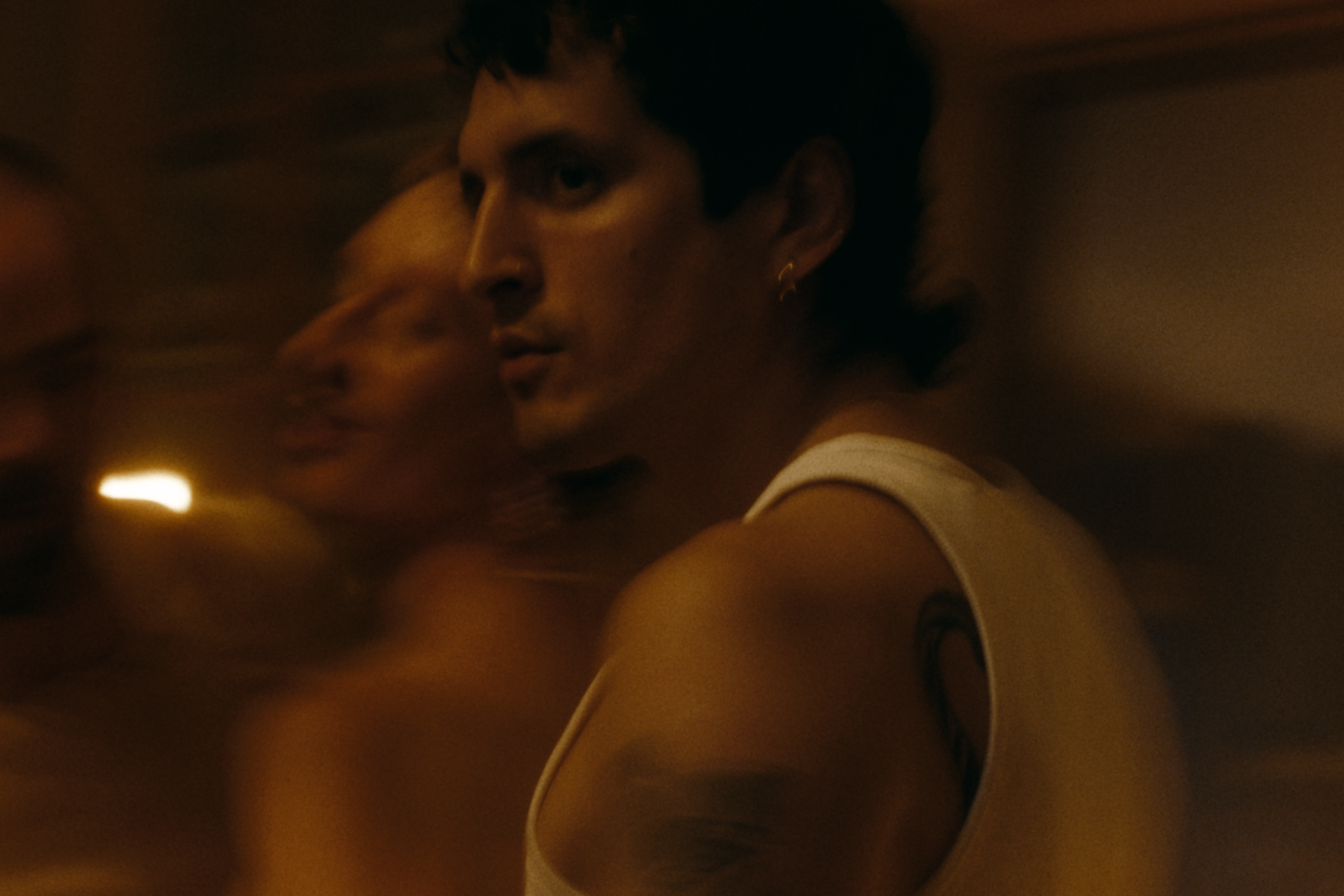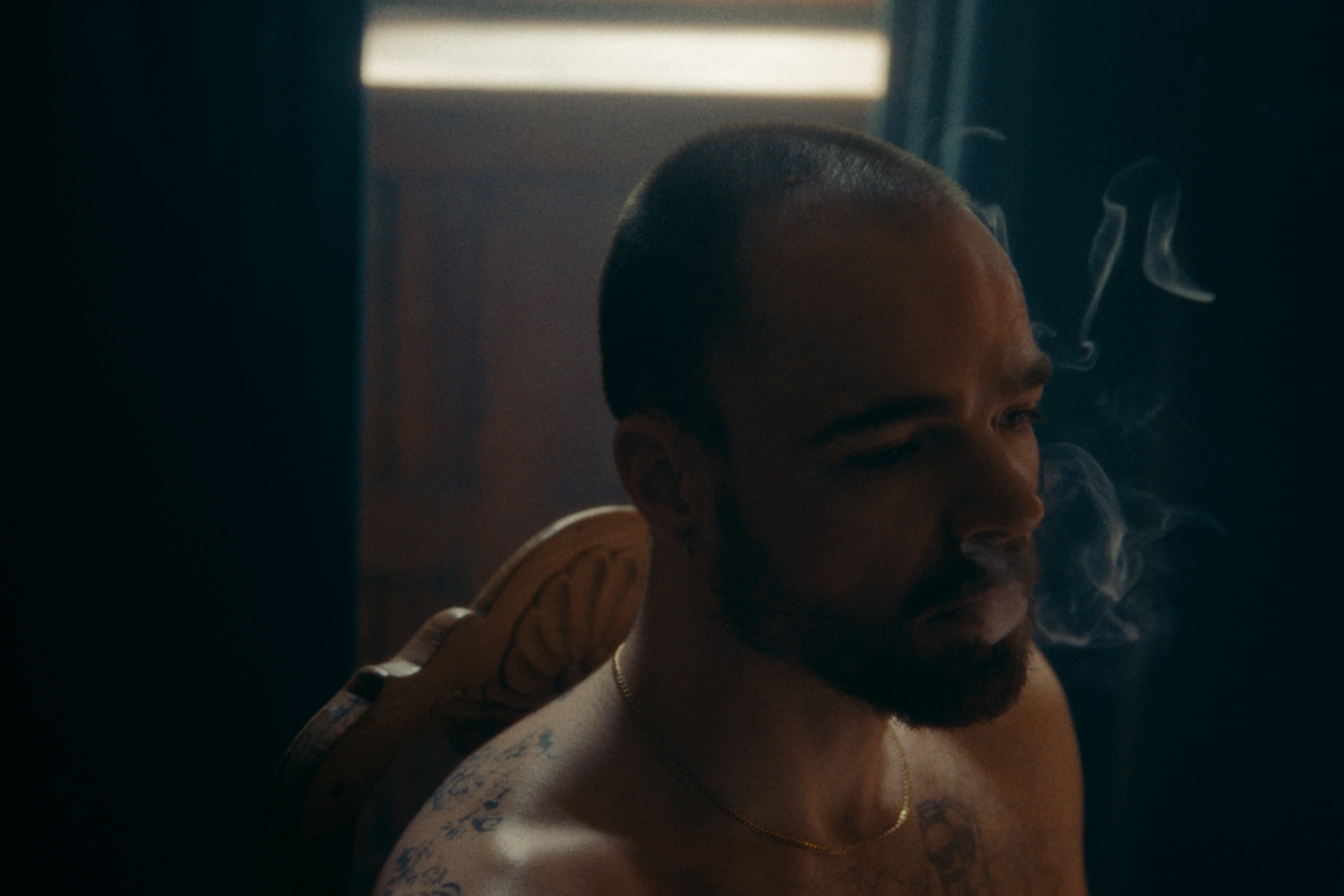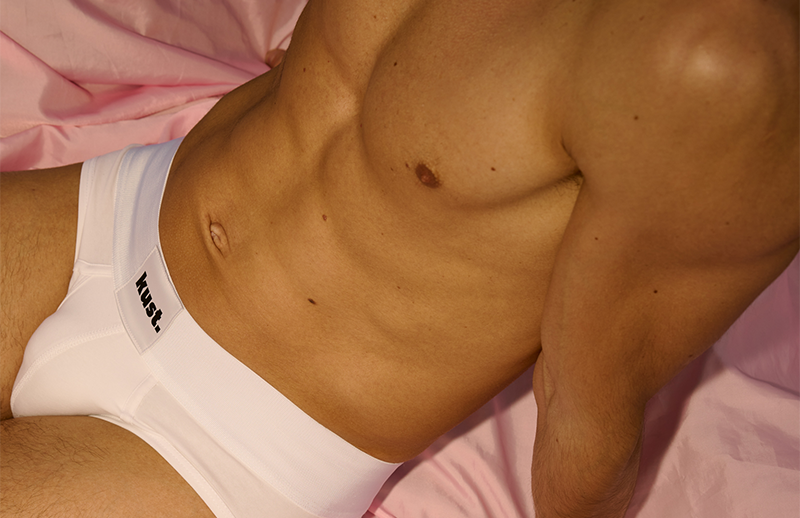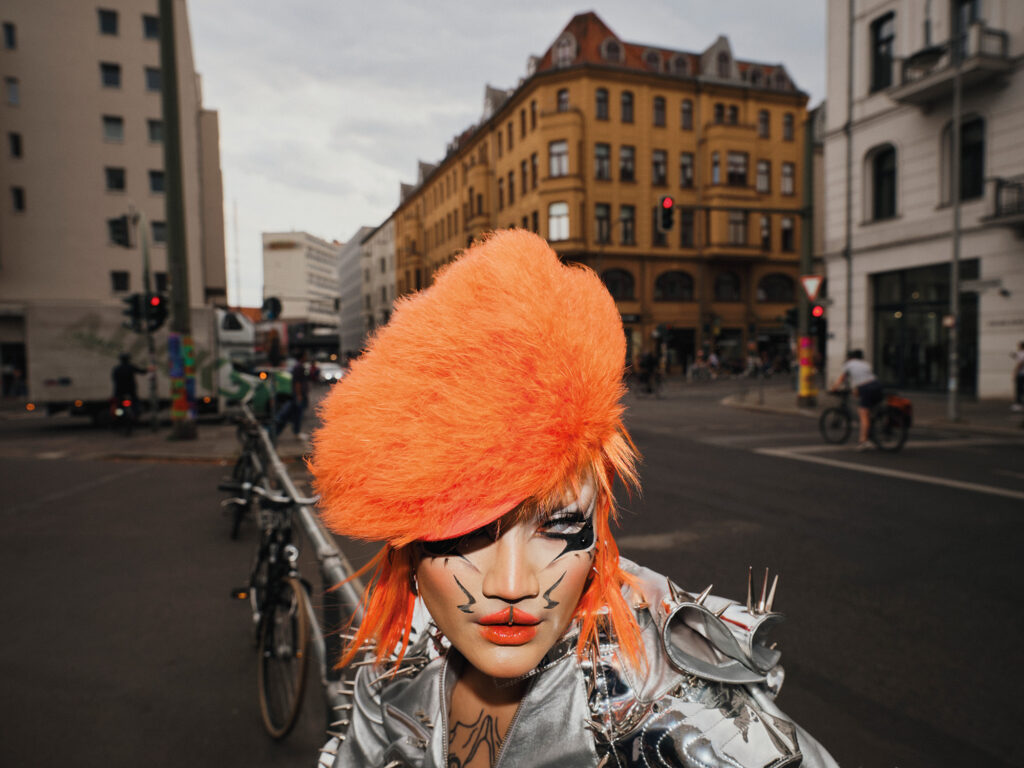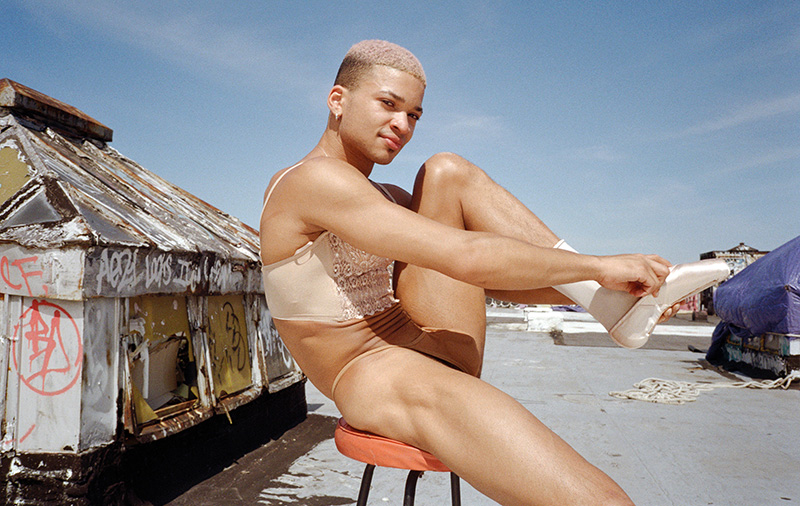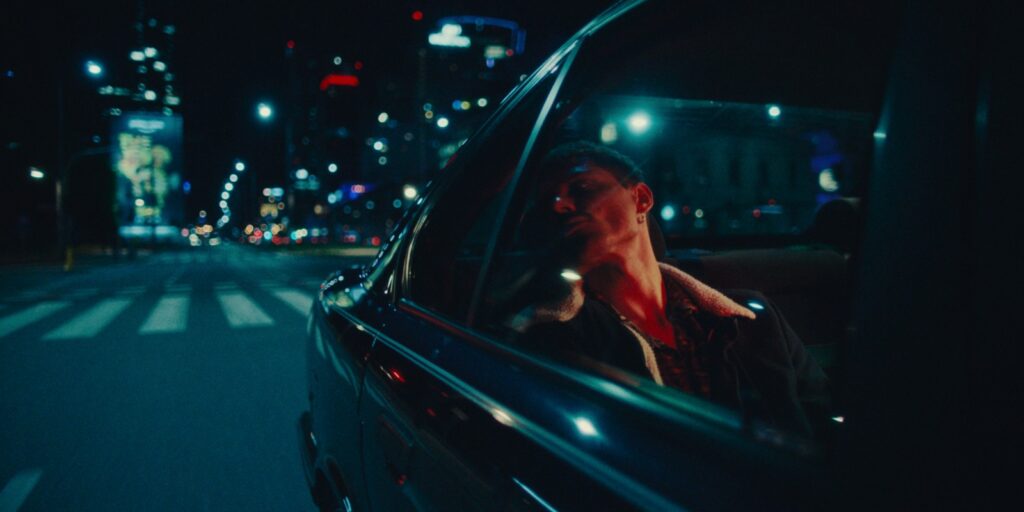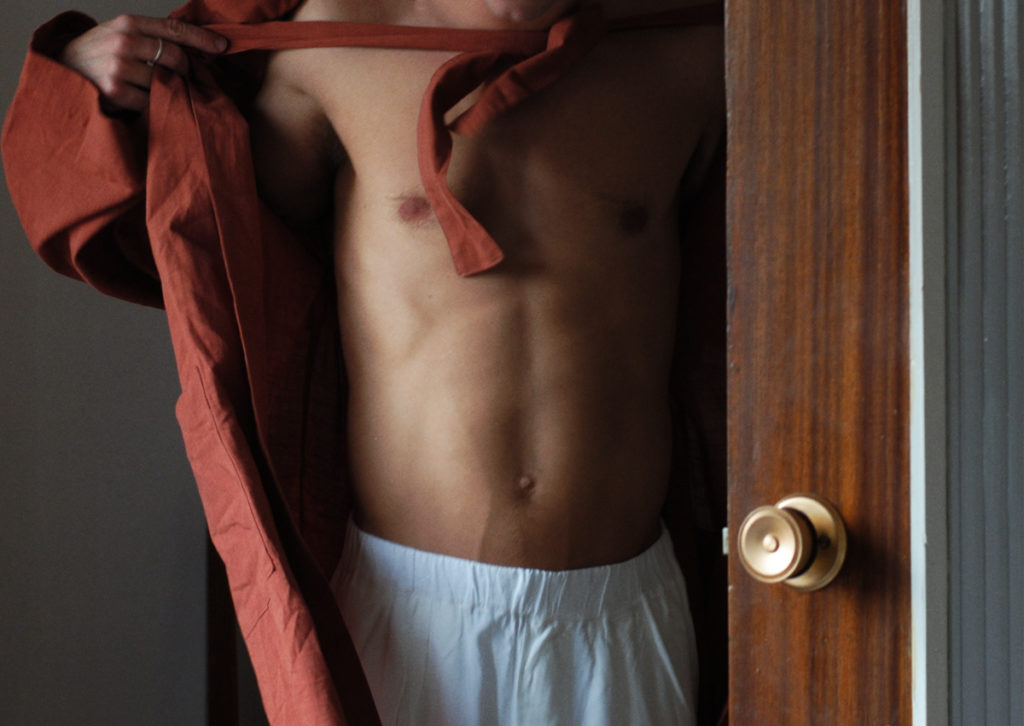Ben Galster: Sexuality Is All About Liberation
Artist Ben Galster
Words Tom Czibolya
The music video for The Irrepressibles’ song “Ecstasy Homosexuality” is Container Love’s latest production, a project we nurtured from the very beginning. Made by the same director as our award-winning films “Love Has No Label” and “The Hidden Dimension”, Ben Galster, and featuring some of our Love Talents as well as the artworks of Container Love artists, “Ecstasy Homosexuality” not only celebrates the beauty of queer love but also serves as a call to action, reminding us that our fight for equal rights and freedom is far from over. The music video tells the story of a young man, recovering from a recent breakup. He joins his best friend on a weekend getaway, where he unexpectedly finds new love amidst the vibrant company of his friends. As a new, extended version is now available online, we sat down with Ben to discuss the sense of community and connection that makes this music video so special to us.

What was the first idea that came to your mind after hearing the song “Ecstasy Homosexuality” for the first time?
The Irrepressibles is the guise of composer-vocalist Jamie Irrepressible, who asked for a brave and visually artistic interpretation of the song. I love his anarchistic attitude and the beauty and honesty that lies within.
Protesting has always been a core idea of Container Love, and this is why Jamie’s desire to incorporate archive footage related to the Stonewall Riots into the music video resonated with us so deeply. It adds a profound layer of significance, connecting the song to a pivotal moment in the fight for LGBTQ+ rights.
Why and how did you choose the footage that ended up in the final cut?
The Stonewall Riots were a series of spontaneous demonstrations against a police raid in the early morning hours of June 28, 1969, at the Stonewall Inn, in the Greenwich Village neighborhood of New York City.
The riots weren’t the first time people fought back against the government-sponsored persecution of sexual minorities, but they marked the first hour of the GLBT movement that went on to become the LGBTQ+ movement we know today. In America, this was the first time LGBT people stood together to protest for their rights, and the first time you had trans people and people of color joining in, a significant change to the classic, predominantly white gay movement.
Editor’s Note: The initialism “GLBT” began to change to “LGBT” around 1988, when activists in the United States started using “LGBT,” and it wasn’t until the 1990s that gay, lesbian, bisexual, and transgender people gained equal respect within the movement, prompting some organizations, like the GLBT Historical Society, to adopt new names, with the society making the change in 1999.
Finding the right footage was a real challenge, as we didn’t want to use just any footage. Eventually, we managed to track down and license material recorded from the 1st commemorative demonstration in the 1970s, featuring some influential activists such as [legendary gay liberation and transgender rights activist] Sylvia Rivera. These clips serve not only as the framework for the music video but as a philosophical backdrop too. In times like these, when the right wing is pushing back globally, we wanted to raise the voice of many and tell the world once again that our rights are safe only as long as we’re ready to stand up for them and for each other.
Jamie Irrepressible is an outspoken queer artist. How did this influence you when working on the concept for the music video?
Jamie is a very inspiring person who is eager to make every album of his into a unique artistic project, a statement if you like. His idea was that homosexual sex and the liberation it represents has led to a lot of great achievements throughout history, going back as far as ancient Greek culture, or da Vinci. We wanted to tap into this rich history and bridge it to contemporary artists, artists part of the extended Container Love family. In the music video, every time there is a touch, there are images of real intimacy, of human connection laced with the message that gay sex has been the motor of exceptional queer art, and it still is, which has advanced society as a whole.
We wanted to portray a celebration of queer life, and the freedom it can include. Jamie’s idea was a left-wing, arthouse approach featuring explicit, honest portraits of gay sex. I immediately thought of two of my all-time favorite queer films, François Ozon’s La Petite Mort and Regarde la Mer. The latter has a cruising scene in a forest first, which gave me the initial idea to build our story around a bunch of friends going on a weekend trip together.
How did this concept influence your choice when it came to casting?
I wanted interesting characters that looked like they jumped out of a Pasolini film. I do like beauty with an edge. The concept called for a natural, believable group of people. Everyone’s face had to be telling about the life they’ve led, adding to the narrative’s authenticity.
Our main character is a young man, and the story unfolds from his perspective, but we deliberately kept the border between reality and fantasy blurred, making the characters pivotal in maintaining this ambiguity. The choice of cast was crucial in conveying this blurred reality, with each actor’s presence contributing to the video’s layered meanings. We never really know if what we see is actually happening or is only a projection of the protagonist’s imagination. Combine this with the inserted stills, artworks, and photography appearing in the video, and they put everything in context eventually delivering the video’s political message.
Male-gay representation was historically key to the civil rights movement. With many other marginalized identities gaining visibility, why is it still important to focus on gay men’s experiences?
It’s the political situation at the moment. With a wave of swift, rightwing political gains and war everywhere, I believe there are countless, sad reminders every day that our hard-fought-for liberties cannot be taken for granted. Whether it’s about queer rights or democracy as a whole, just because we, here in Berlin, have it today it doesn’t mean we’ll have it tomorrow. And it’s true for gay white male representation too.
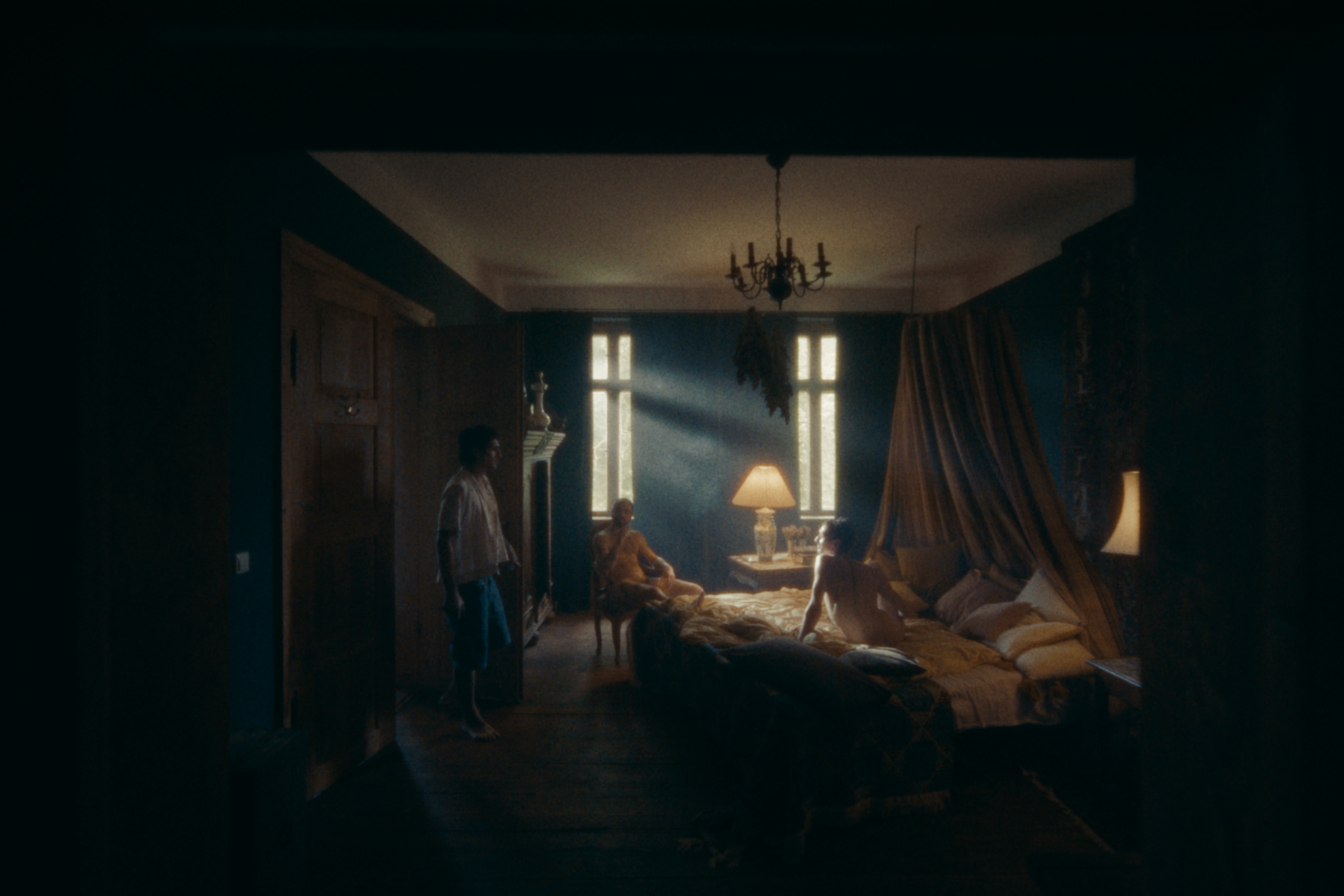
What makes authentic gay or queer storytelling to you?
For me, authentic gay or queer storytelling is about having a strong message. Authenticity arises from the combination of a compelling story and genuine emotion. The story must feel believable, relatable, and real. This was especially challenging with “Ecstasy Homosexuality”, given the extensive nudity and intimacy involved. Despite these challenges, the cast was incredible, particularly because there were no couples among them, and hadn’t met before the shoot. As a director, it was crucial for me to create a safe space where they could truly be themselves. It’s this safe environment that ultimately lends authenticity to the film and allows the emotions to come through.
Why was it important to you to use sexual liberation as the engine of this idea?
Sex is a natural need for many. It’s up there with eating and drinking and sleeping. In a sense, the ways we live out our sexuality can be a very telling, very honest way of expressing ourselves. This is why, in my film, sex stands for freedom and liberation and is not a simple display of sex and nudity.
Another important element of the music video is voyeurism. We’re always there watching, but we see barely anything. What we see is what we let ourselves imagine: it’s really about projecting our own sexuality onto what may or may not be there. I believe that accepting sexuality as something universal that connects many of us, and anyone can use it to express themselves can be a more natural way of living. But for this to happen, people need to be confronted with it. And the way you do just that is to show.
Check out the film!
